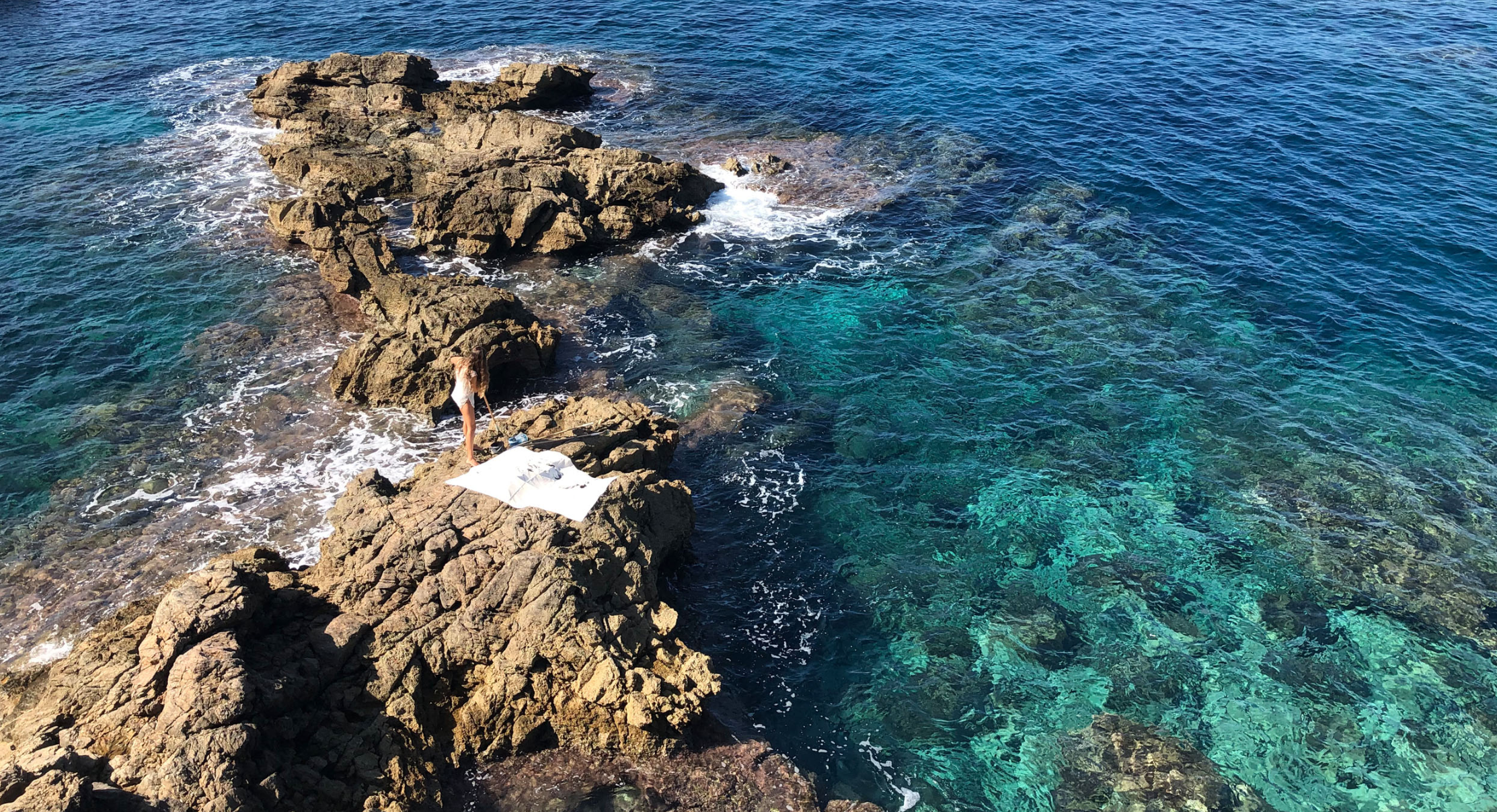Words by Michelle Freya
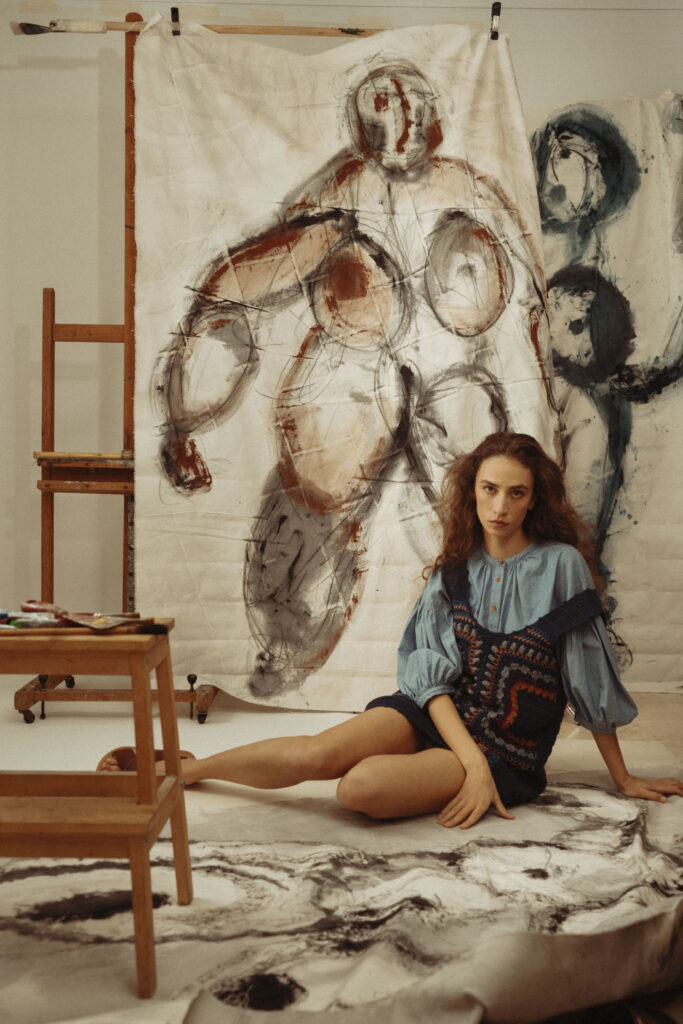
Anna-Alexandra dips her paintbrushes into seawater and then translates the secrets the sea has been yearning to share. Ultramarine and beryl coloured waves crash against the crevices of Mallorca rocks as her contemporary and deeply intuitive artworks hold a mirror to earth’s desires. She is an entity in which ancient Greek myths are kept alive and the soul has the chance to become a sculpture. She moves with fluidity throughout her creations from papier-mâché masks to human-connective expressions born upon cloth canvas.
Anna-Alexandra is a visual artist, a mother, and poet who conveys the forms of love she is certain of and the mythological wonders she believes we must be willing to embrace.
Michelle Freya: Can you recall the time in your life when you realized that mythology would eternally contribute to your artistic expression.
Anna-Alexandra: My educational background is in ancient languages and cultures. My parents studied this as well. When I was a baby they would read ancient Greek myths to me. I experience mythology as a basis of life. I have always been impressed by how human the characters are unlike other contexts. These gods, goddesses, and creatures have natural features such as personalities and weaknesses. They are so alive and so emotional. We can reach them because we see parts of ourselves looking back.
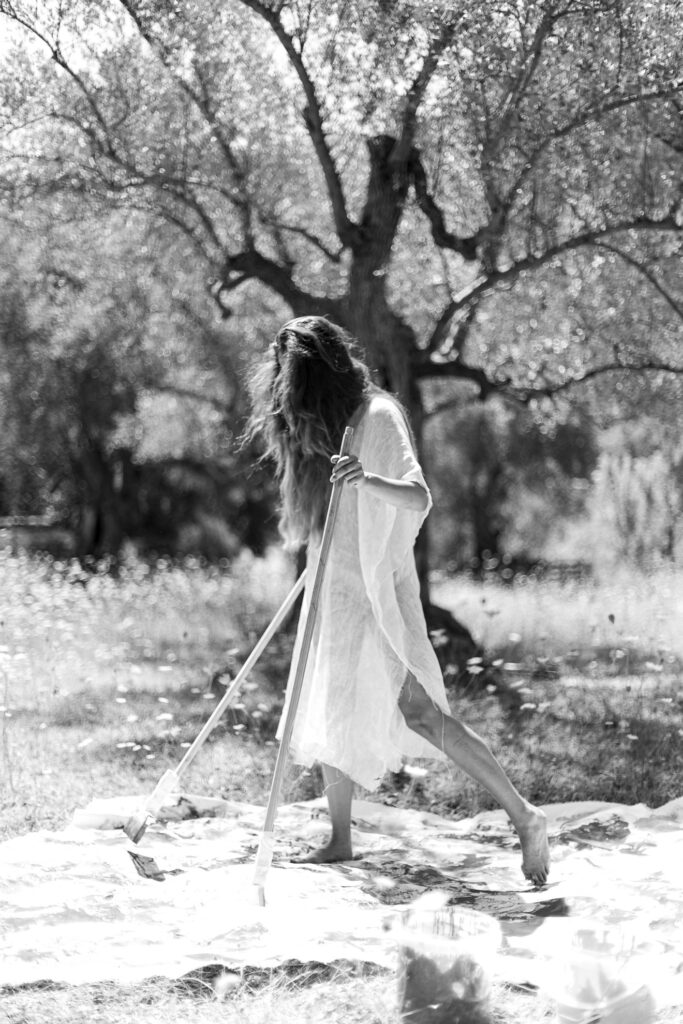
MF: You performed your project Mythos at LA NIT DE L’ART in Palma, Mallorca in 2019. Alongside a violinist and cellist, you painted a portrait of and around yourself on top of a cloth canvas surrounded by the minds and eyes of others. How would you describe the experience of painting in front of a crowd of people.
AA: We have an event which takes place in September where all of the galleries are open at night for three to four days – It is such a beautiful and exciting time. This project began through performance art so sharing this process with people felt profound. As much as I appreciate having people watch, when I am immersed in the movement of making art I don’t find myself distracted by the things happening around me. I feel very centered at that moment.
MF: Your project Human Nature is a one-on-one artistic exploration where you create a portrait of another person on cloth canvas. How does art centering around another individual present contrast to creations employed in solitude.
AA: I was painting on my dear friend’s terrace and she expressed wanting to experience what I was experiencing. When I paint, I use a large-scale canvas, the movement of my body, and sponges with water. These sensations are very specific and she really wanted to be a part of them. I told her, You can be my brush, and I will paint with you. Let’s do this together.
It was an impactful experience for both of us because it’s not the same as being alone with your own ideas. It’s about surrender and how you connect with the individual. You have less control and I love that. I love the paintings that came out of this. I feel joy when I look at them.
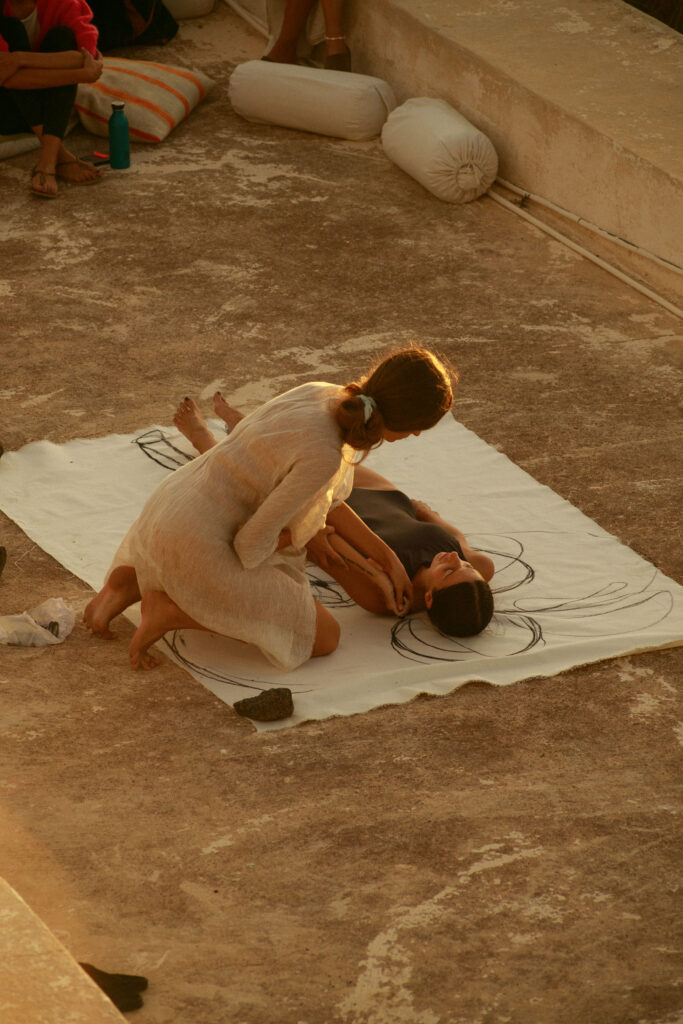
MF: Your project La Mar came to be with you standing on rocks and painting amidst The Mediterranean Sea. I imagine being so close to the entity for which you are making the art is incredibly special. What is it like to create so close to the water.
AA: The feeling is amazing. Especially with this project because it was born from anthropological linguistic pieces of texts I had read. These texts were about how you can find the gender of the water within ancient poetry and myths and also how the words “water” and “sea” are often derived from the female essence.
A man I met here in Spain told me that the phrase “La Mar” (the feminine form of “the sea” in Spanish) is only used when one is speaking kindly or with romantic admiration of the water. “El Mar” (the masculine form) is used in everyday conversation but in poetry, the sea is a woman. For me, living by the sea has always been a dream and now it is happening. To be able to create alongside her is breathtaking.

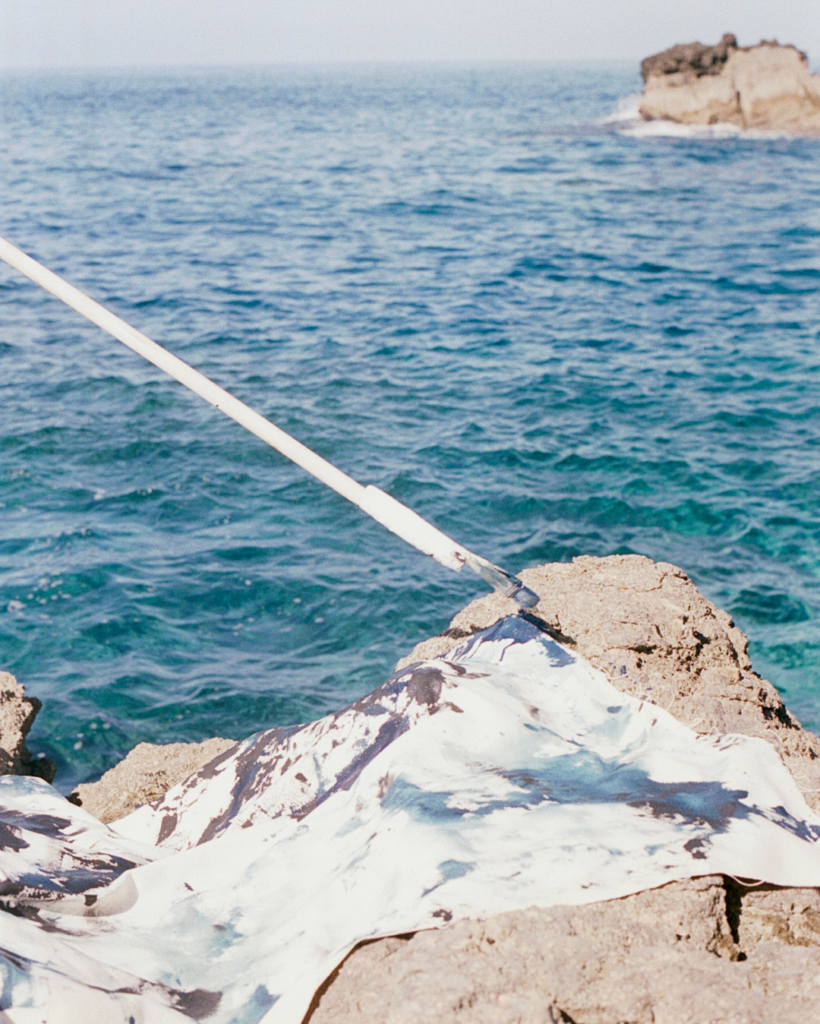
MF: It’s clear that in essence, Mythos (mystery, poetry, metaphor) plays a role of deep inspiration to the core of your work. Do you ever notice a conflict between Mythos and Logos (logic, reason, plan) while creating, or do you have a natural method in which the two can come together and harmoniously coincide.
AA: In ancient times, Mythos and Logos were not in conflict. They existed as two coinciding languages, two ways of thinking. Mythos embodied all of the myths, religious rituals, and mysteries. And although Logos represents a juxtaposition to these aspects, they share a platform and a stage.
The idea that these two ideologies are expected to be in constant dispute is a new concept that has evolved over time. Mythos is often met with the belief that it exists only as something untrue. Creating and wonderment is so natural like breathing or making love. We need both. For myself individually, I don’t feel that hostility. I will read logical texts before making art. They are both important to the explorations within my work in different ways.
MF: What is your relationship with poetry.
AA: I have been deeply connected with poetry since I learned to walk. I was speaking in rhymes and poems before I was able to write. While growing up in Bulgaria, I made a circle of wonderful friends who were poets. We would host poetry shows where we would do readings, perform poems, and have actors interpret our poetry live. My poetic works live in Bulgarian books and anthologies created alongside these talented individuals.
I have had dyslexia my whole life therefore learning English and Spanish was very challenging when arriving in Mallorca. It is important to understand a language to understand the poetry that comes with it as each and every word is a universe. I started translating my Bulgarian poetics into English and Spanish step by step. Poetry doesn’t have to exist as only a sensitivity. I view the passion surrounding reading or writing poetry as another way of perceiving the world in general.
Know
The water, wine, and incense,
The sound of stone upon the slope
The seafoam where
The marble column’s shadow bathes.
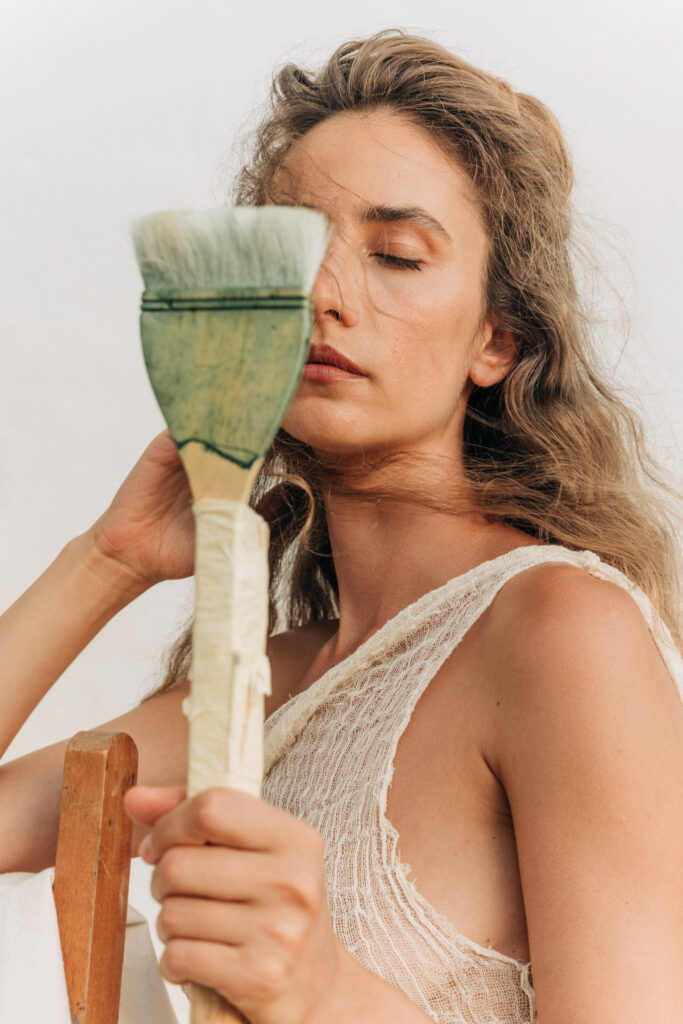
MF: I am curious about the small drawings and their coexisting throughout the project video for La Mar.
AA: The cut-outs are from canvas which I cut into pieces and used the parts to paint the eyes, the corals, and the fish. It was fascinating to destroy the canvas and reconsider how we use it. It is often perceived solely as a square frame format to create with but the possibilities stretch further than that.
I wondered how to reincorporate the cut-outs into some kind of collage but stopped to think, Why not just let them be? Even if it is a small eye, it can exist just as it is. Art is equally important in the small things. I wanted this project to emulate the mythological image of the female goddess born and emerged from the sea. The smaller images are like ties between the connection shared through feminine energy and water.
MF: Who captures the video and photography of your projects.
AA: All of the documentation of my projects and most of my photos and videos are captured by my partner Elia Nedkov. He is an amazing artist and architect. I am grateful for his support as it’s not only about somebody taking photos of you – It’s about being aligned with the person who is doing so and taking comfort in that they understand the concept and that they understand who you are.
MF: Do you have a new project in the works. If so, can you offer us a vision of what this might entail.
AA: It’s inspired by the famous long poem the Odyssey written by Homer (8th century BC) about the traveling Odysseus and his heroic acts. There is a focal topic in it about longing for home and it suggests that this longing is like a dream or a recollection of your roots and that guides you through life. However, I’ve noticed that in all of the philosophies and novels I have read interpreting this concept are from the male perspective. It’s important to me that I explore this longing for women through the female lens.
What is home for us? Is it connected to a place? Is it about our history? Or is it love? Because we think with our hearts. I am still considering what medium I want to use, but I know that I want to incorporate sculpture somehow.
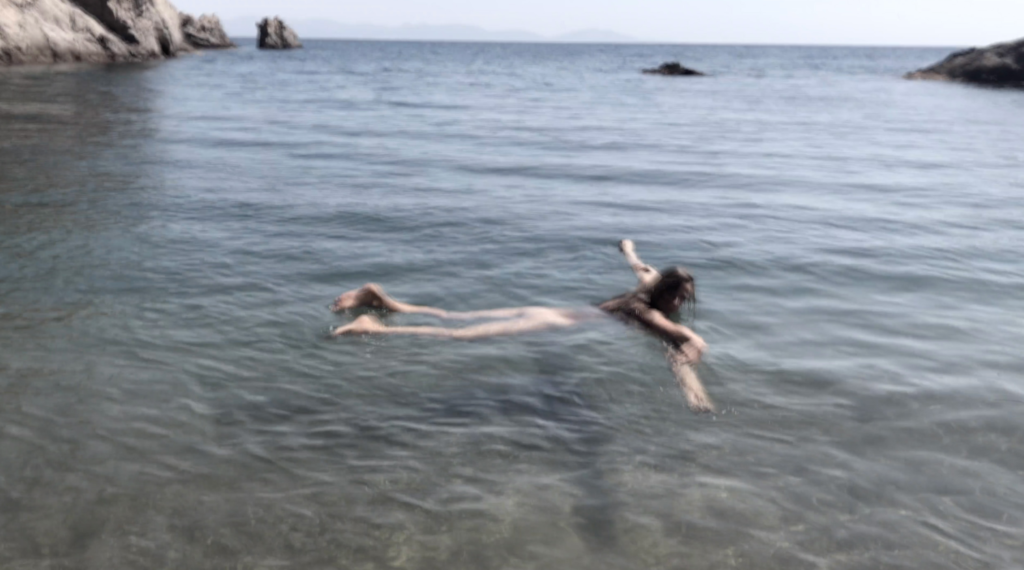
You can see more of Anna-Alexandra’s work HERE
Poem excerpt ‘Know Thyself’ by Anna-Alexandra
Photographs by Elia Nedkov
Interview Michelle Freya
